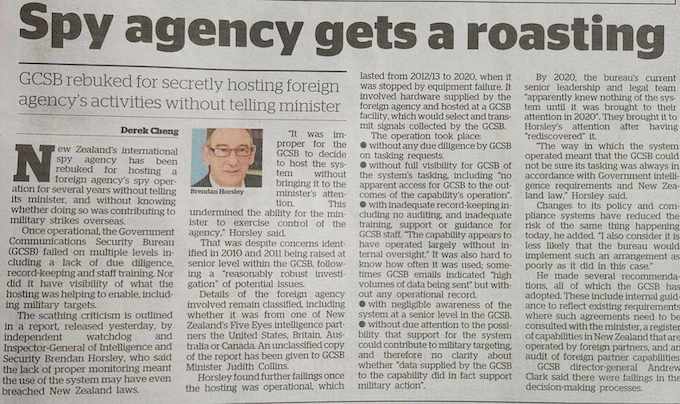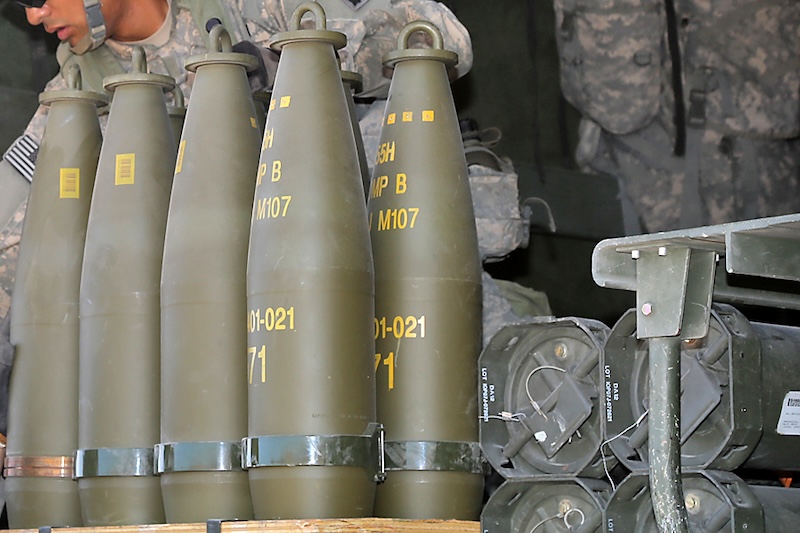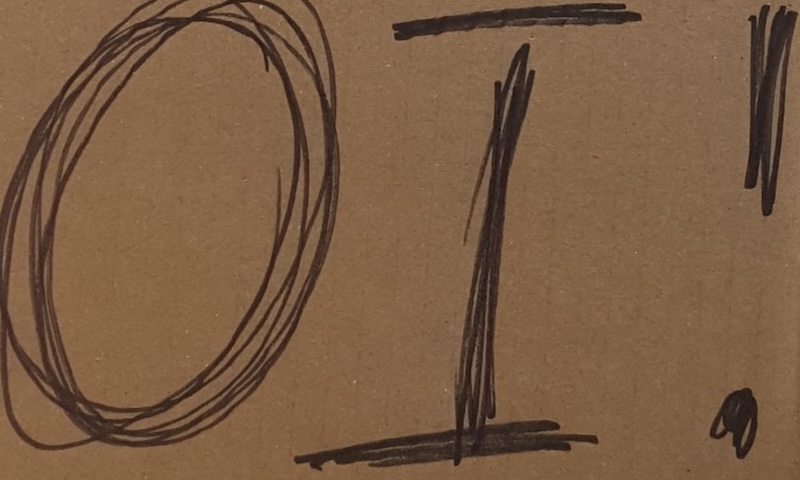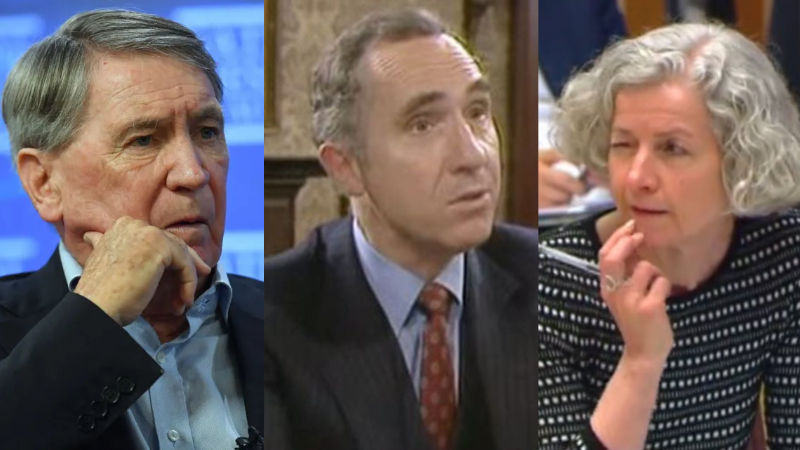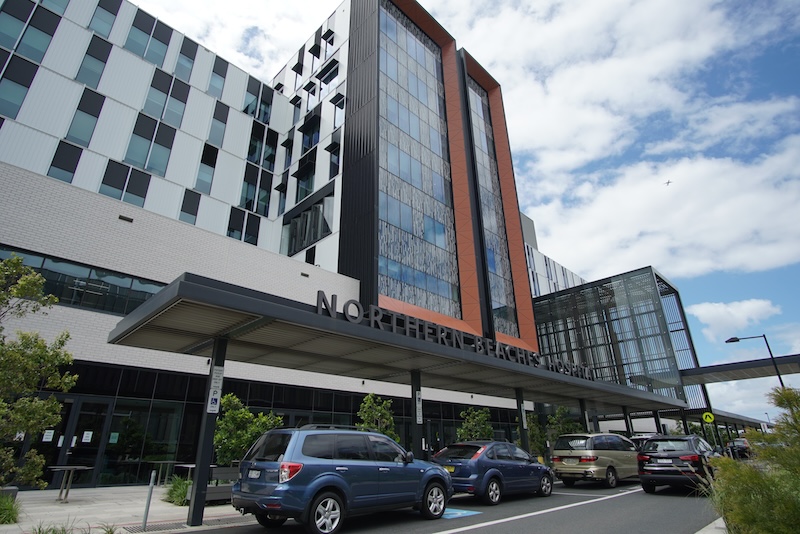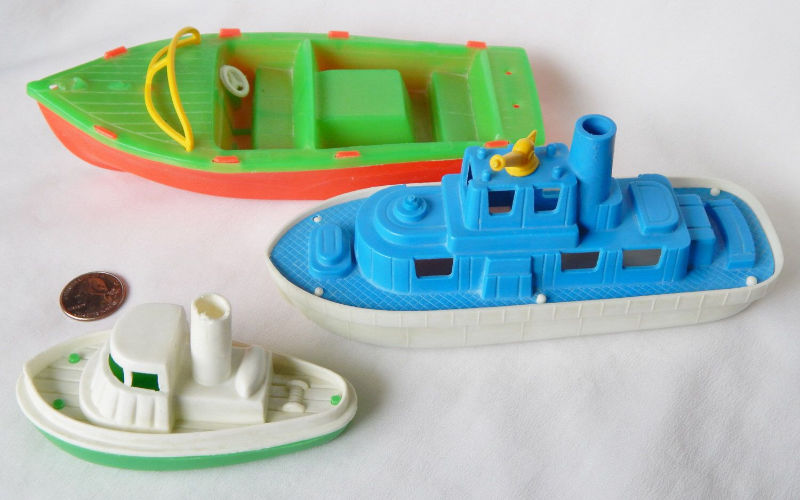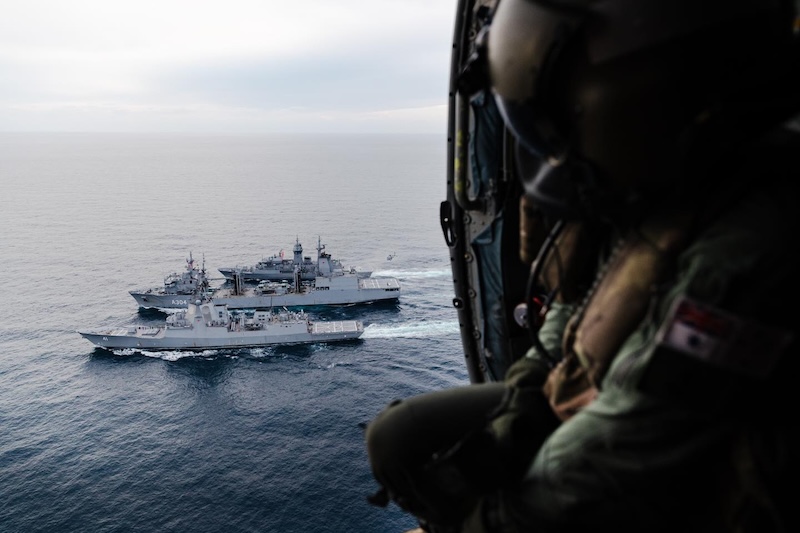Last November, at the time the Coalition were furiously bashing ‘Airbus Albo’ for his penchant for overseas travel, Peter Dutton paid a low-key visit to India. Rex Patrick and Philip Dorling take a look at the Opposition Leader’s trip, which included a private dinner with an Indian billionaire with coal interests in Australia.
DFAT and LOTO
The Department of Foreign Affairs and Trade (DFAT) routinely use the acronym LOTO to refer to the Leader of the Opposition, Peter Dutton.

In late October last year, Australia’s High Commission in India was scrambling to facilitate an imminent visit by LOTO to New Delhi. DFAT emails released under FOI show that the Department and the High Commission were first informed of Dutton’s prospective travel on 20 October, but it wasn’t until 23 October that Dutton’s office confirmed LOTO would be arriving in the evening of 31 October for a four day visit.
This gave the High Commission just five working days to sort out accommodation, logistics and most challenging, appointments with Indian Government ministers and officials.
Curiously Dutton’s office didn’t offer much, if any, guidance and by 26 October High Commissioner Philip Green found it necessary to email Dutton’s team to personally offer “support in engaging with the Ministry of External Affairs for any meetings you are seeking with Government of India officials or representatives”.
With just a few days left before Dutton’s departure, LOTO’s office accepted the offer of assistance and the High Commissioner was fortunately able to secure a short-notice appointment with India’s External Affairs Minister, Dr Subrahmanyam Jaishankar. The High Commission successfully also made another appointment for Dutton but the identity of that senior Indian official has been redacted from DFAT’s FOI release on grounds of diplomatic sensitivity. More about that later.
It’s also clear from the released DFAT records that these meetings weren’t LOTO’s top priority. In fact, much of Dutton’s program had already been organised outside of DFAT because his trip was much more about domestic Australian politics than international relations.
Currying favours
In many respects Peter Dutton’s decision to make visit to India was entirely unexceptional.
Although long neglected in Australian foreign policy, diplomatic, economic and strategic ties between Australia and India have grown apace over the past decade and a half as both countries have identified new trade opportunities and shared a growing concern about China’s geo-strategic rise.
In 2020 the bilateral relationship was elevated by agreement to what was proclaimed to be a “Common Strategic Partnership”. As Defence Minister Dutton participated in the inaugural India-Australia ministerial dialogue in September 2021 and in April 2022, shortly before Australia’s federal election, a bilateral economic cooperation and trade agreement was signed in April 2022.
Behind the diplomatic, strategic and economic relationships, migration from India has produced a rapid expansion in Australia’s Indian community with some 800,000 Australians having Indian heritage.
Indian Australians now account for nearly 3 per cent of the total population and comprise the second largest immigrant community in Australia. The influx of Indian migrants is having a significant cultural impact with Hinduism our countries fastest growing religion and Punjabi the fastest growing language.
Australia’s Indian communities have also emerged as a major factor on the political landscape.
Chefs and Indians
Prior to the 2022 federal election, both the Coalition and Labor furiously courted Indian Australian voters who are significantly concentrated in electorates in the outer west and south west of Sydney and the northern and north-western suburbs of Melbourne. Both sides made lavish promises of government grants for community projects and facilities.
Prime Minister Scott Morrison tweeted selfies of himself cooking Indian flavoured curries while Anthony Albanese visited temples and applauded the contributions of Indian Australians to the nation.
Established political wisdom was that the Liberal Party had the edge in winning support from the Indian community, but surveys prior to the election strongly suggested that was mistaken with four out of ten Indian Australians signalling they intended to vote for Labor while about 25 per cent favoured the Coalition. The Greens placed third with ten per cent of the community’s vote.
After the poll, Labor Prime Minister Albanese continued his political engagement with his effusive embrace of visiting Indian Prime Minister Narendra Modi in March 2023.
For the defeated Liberal’s become a question of catch up politics, seeking to rebuild support in the Indian community as part of Dutton’s strategy to win outer suburban electorates in Sydney and Melbourne as the path to make gains and perhaps regain power at the next election.
The IASA and the Liberals
It’s in this context that LOTO Dutton arrived in New Delhi on the evening of 31 October 2023 accompanied, not by Shadow Foreign Minister Simon Birmingham or Shadow Defence Minister Andrew Hastie, but by the Shadow Minister for Multicultural Affairs, Jason Wood, the opposition’s point man for relations with Australia’s immigrant communities.
Filling out Dutton’s official party were three staffers from Dutton’s and Wood’s offices and no less than four Australian Federal Police close-protection officers, a security legacy from Dutton’s time as Minister for Home Affairs.
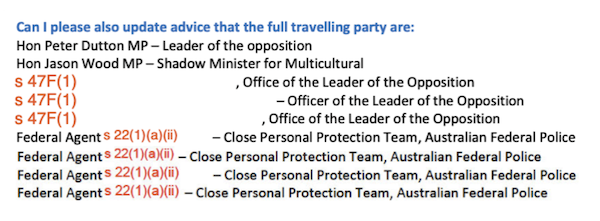
DFAT Cable (Source DFAT)
But that wasn’t all of Dutton’s delegation because his visit and itinerary had in fact been very largely orchestrated not by DFAT and the High Commission but by the Chairman of the India Australia Strategic Alliance (IASA), Dr Javinder Singh Virk, a long time Liberal Party member, friend of former Prime Minister Tony Abbott and supporter of numerous Liberal Party parliamentarians.
An influential and respected figure within Indian business and community organisations, Virk’s Liberal Party affiliation is amply demonstrated on his social media postings.
Joint Peacocks
In his media release on his visit to India, Dutton acknowledged the connection with the IASA, but omitted to say that he was accompanied by Virk and indeed by a delegation of some twenty Indian Australian business figures and local government politicians including Liberal Party, Blacktown Councillor Livingston Chettipally who gifted the Opposition Leader an ornamental peacock sculpture. (Jason Wood got a peacock as well.)
In an overlooked parliamentary speech close to the end of last year, Assistant Minister to the Prime Minister Patrick Gorman was scathing of the delegation, claiming Dutton was accompanied to New Delhi by “an unlicensed real estate agent, a disgraced Liberal candidate, unregistered migration agents … property developers, people who’d had restrictions placed on them by ASQA [Australian Skills Quality Authority] and even those who were the subject of an Age investigation.”
That’s a highly partisan portrayal. However, aside from the quality or otherwise of Dutton’s delegation, it’s clear from DFAT’s emails and coverage of the visit in the Indian press that Opposition Leader’s official government meetings was squeezed into a program largely geared towards photo opportunities and networking events directed towards building Liberal Party ties with the Australian-Indian business community, and generating favourable publicity directed at the Indian community back in Australia.
And in the program curated by Dr Virk one name stands out.
Naveen Jindal the coal baron
Most Australians won’t know the name Naveen Jindal, but he’s a big deal in India and has significant Australian connections.
Jindal is an Indian billionaire industrialist, the chairman of Jindal Steel and Power Limited (JSPL), a leading steel producer with worldwide coal and power interests including a 60.38% stake in Wollongong Resources which operates the Russell Vale and Wongawilli Collieries.
Jindal has long mixed business and politics. A decade ago Jindal was seen as one of India’s brightest younger entrepreneurs and a rising star within the Congress Party. He was elected to India’s Federal Parliament, the Lok Sahba, in 2004 and re-elected in 2009.
In 2012 Jindal and Linfox chairman Lindsay Fox were the inaugural co-chairs of the Australia-India CEO Forum, a bilateral government supported industry group to facilitate Australia-India business cooperation and trade.
Alongside his business and political ambitions, Jindal built his standing as a philanthropist, establishing the O.P. Jindal Global private university (named in honour of Naveen’s industrialist father).
Untidy allegations
In 2013, however, his political and personal fortunes were dealt a severe blow when Indian prosecutors with offences charged him with criminal misconduct, conspiracy and cheating for allegedly paying bribes to government officials to buy coal mining blocks at below-market prices.
As part of a wider “Coalgate” scandal that embroiled the Congress Government of Prime Minister Manmohan Singh, India’s Central Bureau of Investigation alleged that a former junior minister Dasari Narayan Rao received massive bribes from JSPL to influence coal block sales.
Jindal has strenuously denied the charges.
After protracted legal delays and complications including the disappearance of government files relating to coal allocations and the untimely death of former minister Rao, the case is still before a Delhi court a decade later.
Coal expansion
However, Naveen Jindal’s legal troubles haven’t held back his conglomerate’s performance and expansion.
JSPL shares of Jindal Steel and Power hit a record at the start of this month after the company reported a 272 percent rise in consolidated net profit for the quarter ended December 2023. JSPL stock has gained nearly 4 per cent since the beginning of this year and risen 32 per cent in the past year.
Last October the company broke ground for a new $US1 billion coal mine and power plant project in Botswana. This month JSPL offered a lazy $US1.7 billion for a distressed coal-fired power plant in eastern India.
In this context, JSPL’s recent failure to secure environmental approval for a $US2 billion iron ore mine in South Africa and the closure on safety grounds of the Russell Vale Colliery near Wollongong are relatively minor glitches in the company’s global fortunes.
At the time of writing, with permission from the Delhi court and a direction “not to tamper with any evidence or try to influence any witness” in his criminal trial, Jindal is on an overseas trip that includes travel to the United States, United Kingdom, Italy and Spain.
Coal baron dinner date
This was the person who was at the top of Peter Dutton’s list to visit in New Delhi.
Indeed, centrepieces of LOTO’s itinerary were a dinner on 1 November at Jindal’s palatial 3.5 acre residence at 5 Man Singh Road in central New Delhi, and a speech by Dutton on 3 November to the India-Australia Studies Centre at Jindal’s O.P Jindal Global University.
Curiously, however, Dutton had made no mention of Naveen Jindal in the media release that announced his trip to India and although the text of his speech was distributed to the Indian media, it wasn’t publicised to the Australian press and was only being posted on his website sometime after his return to Australia.
Dutton wasn’t keen to publicise many details of his trip to India and he wasn’t interested in drawing attention to Naveen Jindal.
Foreign Affairs
In his speech at O.P. Jindal Global University, Dutton presented a stark view of international affairs with the world divided in conflict between democracies such as Australia and India and authoritarian states such as Russia and others – China was not explicitly named.
“This is not a time for appeasement”, Dutton declared with a Churchillian overtone.
“Whenever we witnessed authoritarian coercion and aggression, it is vital that nations large and small link together to unequivocally condemn such behaviour. Australia and India have collaborated with Japan and the United States, as part of the QUAD, which is an emphatic statement of our desire for peace in the region.”
Dutton proclaimed himself in favour of greatly increased defence cooperation between Australia and India, was hopeful for increased uranium Australian sales and for India’s nuclear power sector to set an example for similar development in Australia under a Coalition Government.
It’s not known what India’s External Affairs Minister made of the Australian Opposition Leader.
Minister Jaishankar is a veteran diplomat of great subtly and sophistication and Dutton’s Manichean world view as expressed in his speech showed little understanding of the complexity of India’s strategic outlook, or the ambiguity of India’s foreign policy towards Russia – after all, for all Dutton’s talk about democratic solidarity, it’s Indian oil refineries that are providing Russia’s oil exports with a large backdoor to bypass Western economic embargoes and sanctions.
Hardeep Singh Nijjar murder
DFAT won’t reveal Dutton’s other high level, foreign policy related appointment but it was most likely Prime Minister Modi’s National Security Adviser, Ajit Kumar Doval.
We know this because the Opposition Leader’s parliamentary register of interests includes disclosure of the gift of an “ornamental sceptre from Ajit Doval”.
Doval is the kingpin of India’s intelligence community, having previously served as Director of India’s internal security agency, the Intelligence Bureau after serving for a decade of its operational wing. Doval’s career has very largely revolved around dealing ruthlessly with Kashmiri and Sikh separatists as well as Pakistani espionage.
Dutton’s meeting with Doval, and with External Affairs Minister Jaishankar, could have provided opportunity to raise the issue of alleged Indian Government involvement in the assassination in Canada of the Sikh separatist leader Hardeep Singh Nijjar in September 2023.
Nijjar’s murder was widely seen as a disturbing indication of the increasingly authoritarian tendances of Prime Minister Modi’s Hindu nationalist BJP Government.
Canada expelled a top Indian diplomat, saying there was evidence the Indian Government was behind the murder of a Canadian citizen.
Australia’s Foreign Minister Penny Wong said the Australian Government was “deeply concerned” by allegations that the Indian Government had orchestrated the murder and revealed those concerns had been raised at “senior levels”. If anyone knows the inside story it would be National Security Adviser Doval.
Shyness from Dutton
However, Dutton’s office did not respond to questions from MWM about whether he raised the matter in his meetings with Doval or Jaishankar.
Nor has LOTO been at all forthcoming about his meeting Naveen Jindal. It’s clear from his itinerary that this exclusive dinner on 1 November was a highpoint of his visit to New Delhi.
Speaking at Jindal’s private university two days later, he paid tribute to Jindal’s entrepreneur father and heaped praise on Naveen, declaring him to be “a world renowned businessman, philanthropist and patriot in his own right.”
Yet Dutton remains deeply reticent about their encounter. It wasn’t in his media release and the hospitality he received at Jindal’s New Delhi residence isn’t recorded in his parliamentary declaration of interests — even though he took care to record various minor gifts including cufflinks and scarves from the India Australia Strategic Alliance and books and pictures from Delhi’s Akshardham Temple.
Dutton did not respond to MWM’s questions about the purpose of his meeting with Naveen Jindal or whether, apart from dinner, he had received any gifts or benefits from the billionaire.
Politics, not diplomacy
Foreign policy doesn’t stop in Opposition.
Out of government MPs and especially Opposition leaders and shadow ministers need to travel overseas in order to gain international insights and prepare for government in the future.
Australian embassies and high commission’s often find visits by Opposition parliamentarians advantageous because, given time to work up a good program, they provide useful opportunities to open doors and engage senior political figures and officials.
Aside from meeting Jaishankar and most likely Doval, Dutton met the Minister of Road Transport Nitin Gadkari and prominent government economist and planner Shri Suman Bery but those meetings were not facilitated by the High Commission.
Dutton’s office did not response to questions from MWM about what meetings the High Commissioner or High Commission staff attended; however, DFAT’s highly abbreviated reporting cable suggests that the benefit to Australian diplomacy was not particularly significant.
For Dutton, however, his recent trip to New Delhi suggests he sees international engagement largely as an extension of domestic political strategy. It’s about the overseas side of political networking, building links with important communities and business interests to support the next federal election campaign.
In the case of New Delhi, it was about photo opportunities and engaging one of Indian’s wealthiest businessmen, a philanthropist, a political player and a figure tarnished by allegations of bribery and corruption.
Dutton’s office did not respond to questions about the purpose of his meeting with Naveen Jindal, but having flown 20,000 kilometres to New Delhi and back it’s unlikely LOTO just went for a social chit chat.
Vision 2024: aim to “make Australia a better quarry” … and a CO2 dump
This post was originally published on Michael West.

